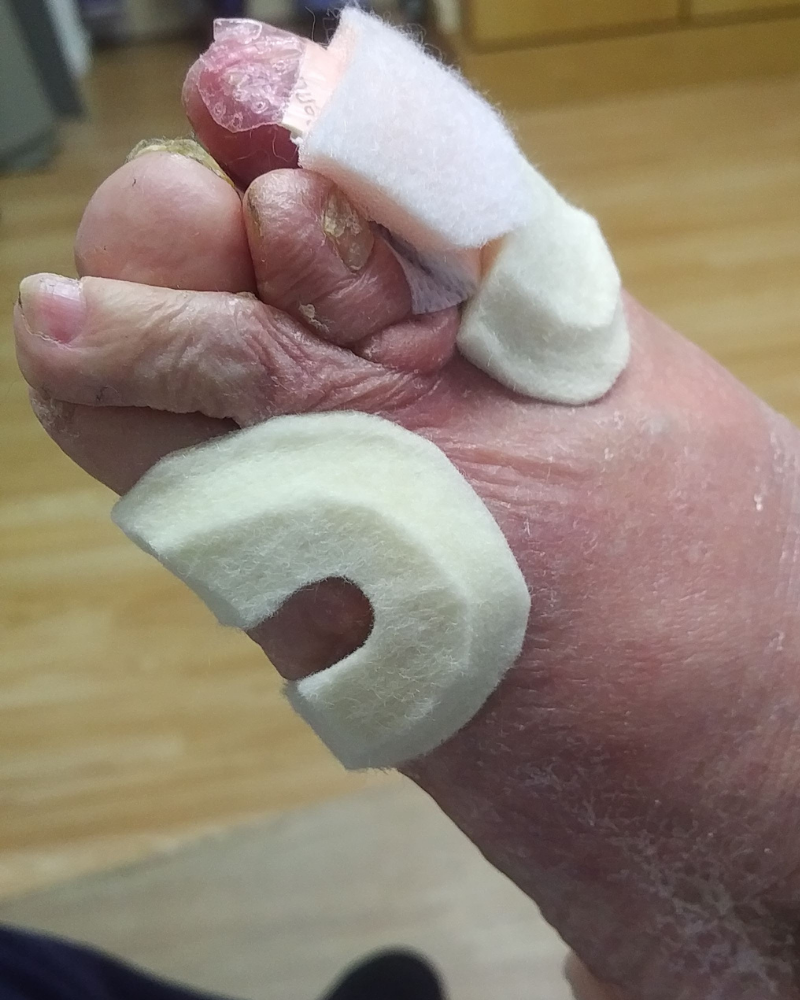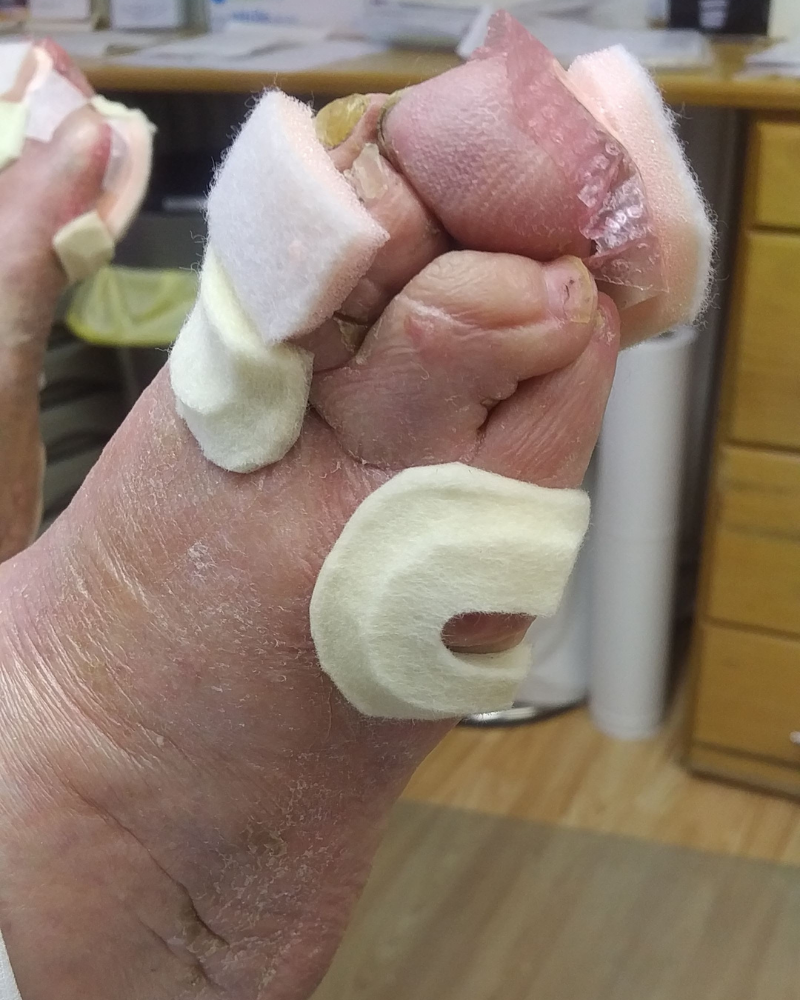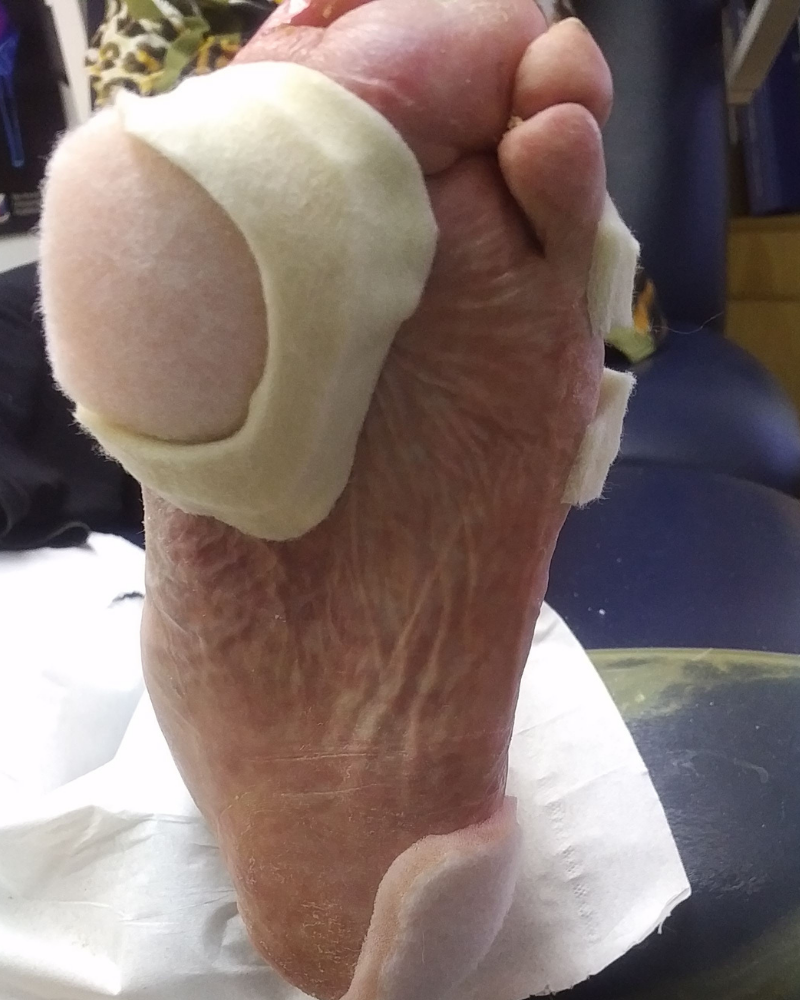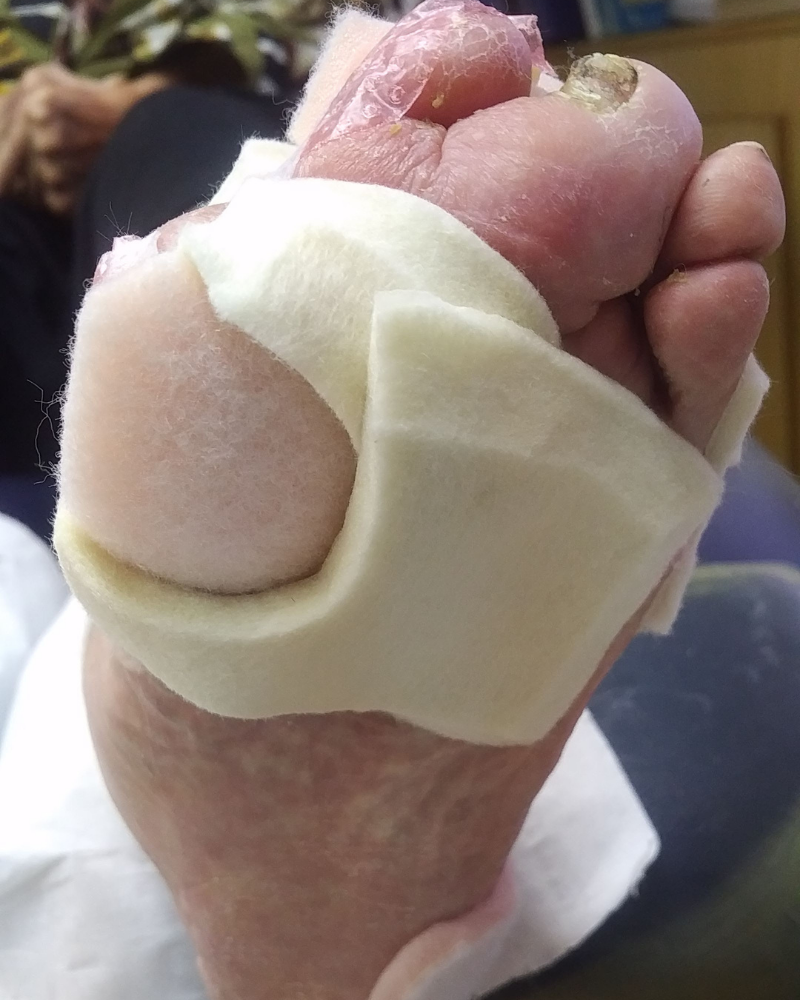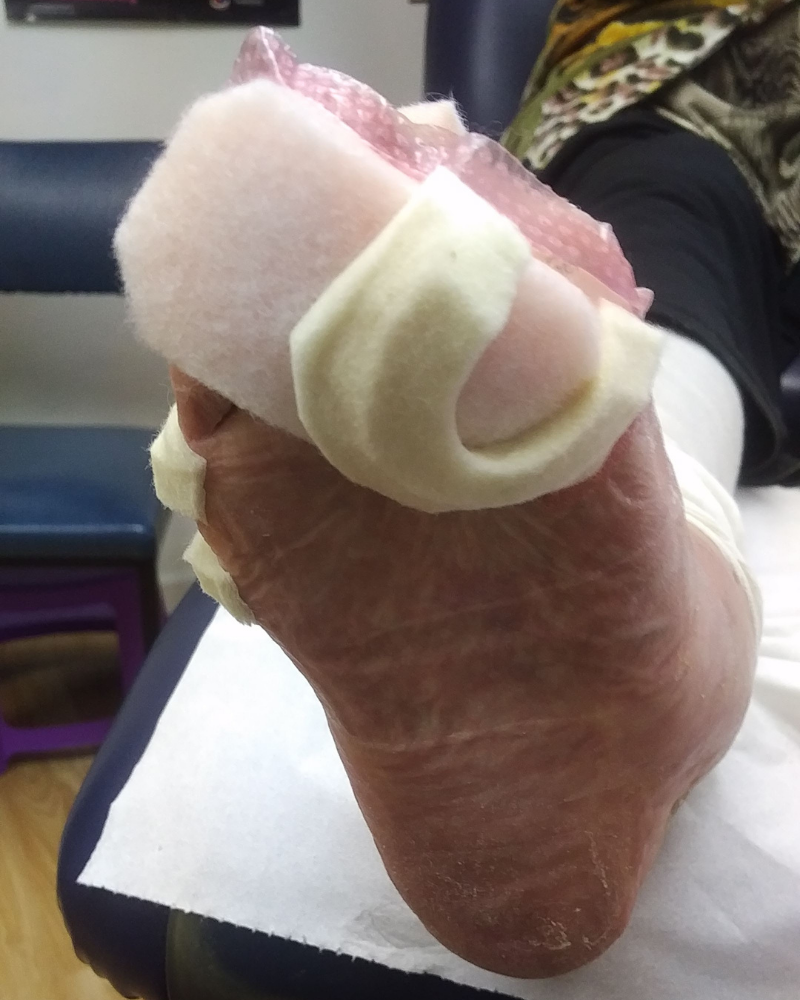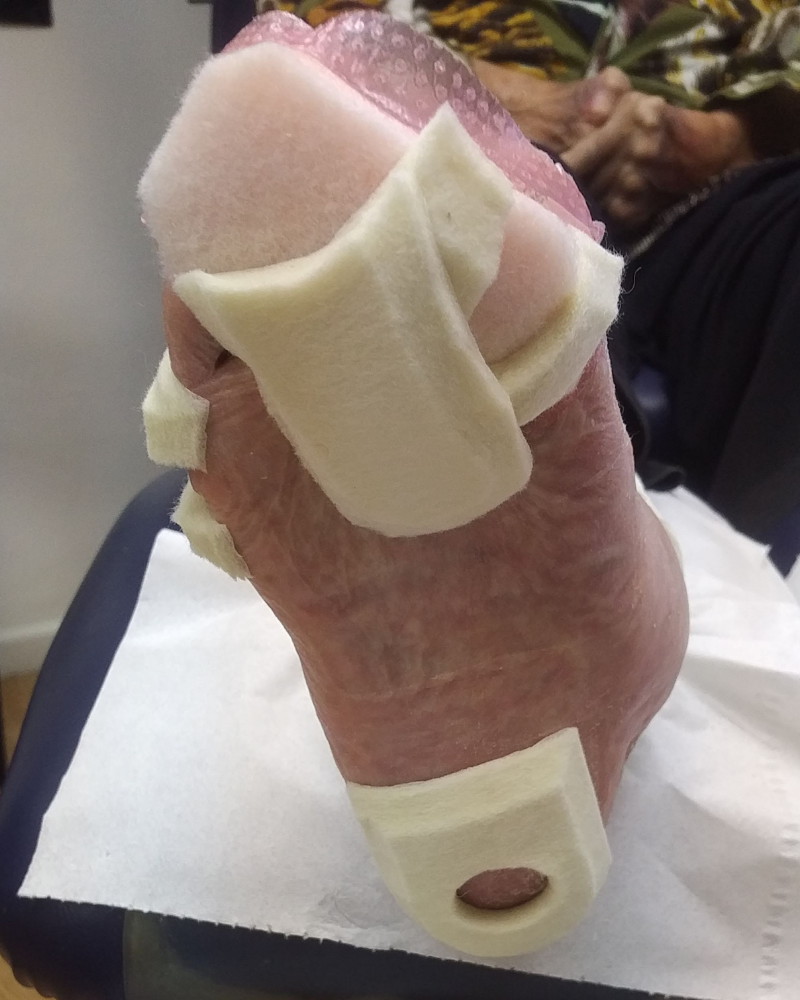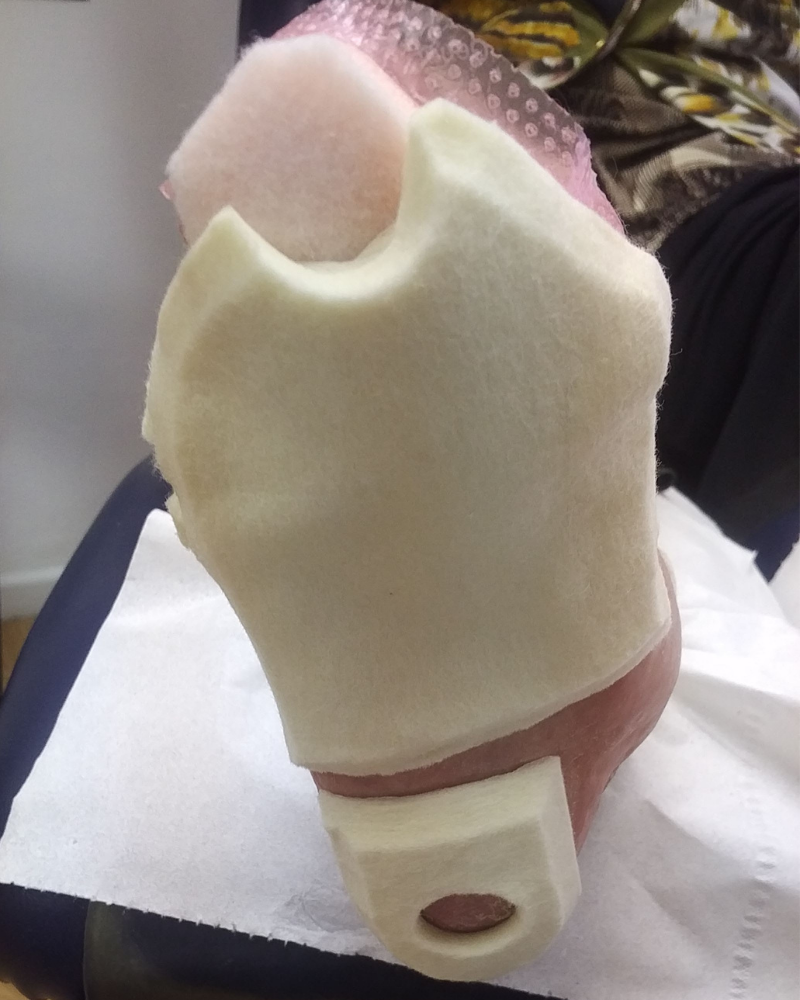Combining pads for difficult feet
By combining different materials and padding techniques, then even the most difficult of feet or foot problems can be managed effectively. In this section, Jonathan uses combination padding to protect severely deformed rheumatoid feet. Due to pressure on boney prominences together with tissue fragility, these would ulcerate easily without such protection.
If you have a difficult foot type, make sure you apply a protective layer (such as adhesive fleecy foam pads) to areas prone to damage. If any areas are actually ulcerated then consider using appropriate wound dressings instead.
The first step to applying combination pads is placing an initial layer of adhesive felt padding such as small crescents and filler pads on the desired area. After this, you can place a second layer of adhesive felt padding, but this time using a larger ‘U’ pad, or crescent pad.
A third and final layer of adhesive felt padding can be placed wherever necessary for nice contouring and maximum pressure relief in order to ensure comfort for the patient.
You can secure all pads in place with stretchable adhesive strapping (eg. hypafix, mefix) or alternatively bandaging can be used.
It is important to make sure that there is sufficient room in footwear, especially when using combination padding as it will take up a significant amount of available space. If necessary, consider a change of footwear to wider or deeper fitting and possibly even bespoke footwear.
Slide through the images above to see different stages of applying combination pads to a difficult foot type.


